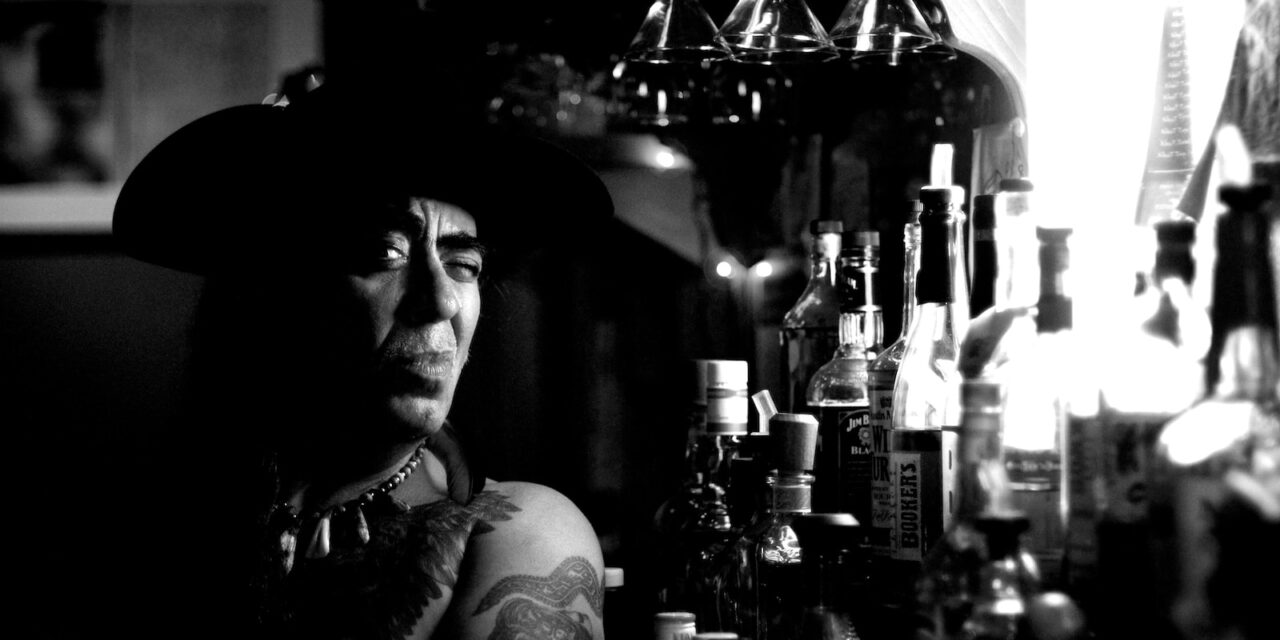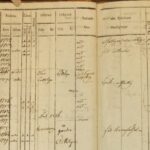The Art of Ancestral Ink: Exploring The Historical Significance of Tattoos in Preserving Family Legacies
Tattoos, a form of body art etched into the skin, have been a part of human history for millennia. Beyond their aesthetic appeal, tattoos have held profound significance in various cultures, often serving as living records of family legacies and personal stories. In this section, we embark on a journey through time and across cultures to uncover the historical significance of tattoos in preserving family histories.
A Tapestry of Cultures
Tattooing is a universal language, transcending geographical boundaries and connecting people across cultures. From the intricate tribal designs of indigenous peoples to the ornate patterns of ancient civilizations, tattoos have been woven into the fabric of human history.
In Polynesia, for instance, the art of tattooing, known as “tatau” or “tatu,” has deep cultural roots. These intricate tattoos often told the story of one’s lineage, accomplishments, and status within the community. In essence, they served as a visual family tree, proudly worn on the skin for all to see.
Similarly, in Japan, the art of Irezumi has a long history, with tattoos often symbolizing family, identity, and a sense of belonging. For many, these tattoos were an indelible mark of one’s familial heritage, passed down through generations.
A Mark of Identity
In many cultures, tattoos were not just an expression of individuality; they were also a means of preserving and transmitting family legacies. The marks etched into the skin carried the stories of ancestors, their triumphs, and their traditions. They were a way to ensure that the past was not forgotten, that the legacy of one’s lineage remained alive and visible.
These ancestral tattoos were often meticulously designed, incorporating symbols and motifs that held deep familial and cultural significance. From Celtic knots representing eternal family bonds to Chinese characters denoting ancestral honor, tattoos became a living testament to the values and heritage of those who wore them.
A Bridge to the Past
Tattoos serve as a bridge between the past and the present, allowing us to touch the lives of our forebears. In the world of genealogy and family history, uncovering these tattooed stories can be a revelation. They provide a unique window into the lives of our ancestors, offering insights into their beliefs, traditions, and connections to their family and community.
Today, as we explore our own family histories and genealogies, the presence of ancestral tattoos can be a powerful link to our past. They remind us that our stories are not just recorded in dusty archives but are also inscribed on the very skin we inhabit.
The art of ancestral ink is a testament to the enduring power of tattoos to preserve family legacies. Across time and cultures, tattoos have been a tangible connection to our ancestors, telling their stories in a language that transcends words. As we continue to delve into the world of genealogy, let us not forget the stories etched in ink, for they are a living testament to our shared human history.
Tattoos as Time Capsules: Unearthing Family History Through Ink
In the world of genealogy and family history, the quest to uncover our roots often involves sifting through dusty archives, examining faded photographs, and deciphering handwritten letters. However, there exists a remarkable and unconventional source that holds a treasure trove of stories about our ancestors: tattoos. These indelible marks on the skin serve as living records of family history, recounting tales of our forebears and their unique life experiences.
The Language of Tattoos
Tattoos have long been a means of personal expression, and for many individuals, they are a canvas upon which their life’s journey is artfully documented. Each tattoo tells a story, but beyond personal anecdotes, they often encapsulate a broader narrative, linking generations through shared experiences.
Consider the sailor tattoos of the early 20th century, a tradition rooted in seafaring culture. These tattoos often represented nautical milestones, adventures, and far-flung destinations. For a family historian, the anchor on their great-grandfather’s forearm might tell the tale of his travels across distant oceans, serving as a time capsule to a bygone era of exploration and maritime life.
Memories Etched in Ink
Tattoos are not merely decorations; they are inscriptions of memories, commemorations of life events, and declarations of personal identity. From the names of loved ones to symbols of cultural heritage, each tattoo etches a chapter of an individual’s story.
In some families, tattoos serve as an oral history in ink. Stories of ancestors’ courage, resilience, and triumphs are passed down from generation to generation, often alongside the visual evidence on their skin. These tattoos become a living connection to our roots, allowing us to touch the experiences of those who came before us.
A Legacy Preserved
As time marches forward, family histories can fade into obscurity. However, tattoos endure. They serve as time capsules, preserving memories that might otherwise be lost to the sands of time. When we trace the lineage of a tattooed family member, we unearth not just their personal history but also the collective history of their era and culture.
Moreover, tattoos often reflect the values and beliefs of the time, shedding light on societal norms, personal aspirations, and even political allegiances. They provide context that enriches our understanding of our ancestors and the world in which they lived.
Tattoos as time capsules offer an unconventional yet invaluable avenue for delving into family history. These inked narratives recount the experiences, passions, and identities of our forebears, ensuring that their stories live on for generations to come. So, as you explore your family’s history, remember to look beyond the conventional records; sometimes, the most vivid tales are etched right before your eyes in the form of tattoos.
Inking Through Generations: A Legacy of Tattoo Traditions
Tattoos have a unique way of transcending time and generations, leaving an indelible mark not only on the skin but also on the family tree. In this section, we delve into the captivating stories of families that have maintained and passed down tattoo traditions through the ages, forging a powerful link between ancestors and descendants.
A Living Heritage
For some families, tattooing is more than a personal choice; it is a sacred tradition that weaves through the fabric of their lineage. These families have embraced tattooing as a means of preserving their heritage, and the practice becomes a rite of passage, marking important milestones and symbolizing the continuity of their cultural legacy.
Take, for instance, the Samoan tradition of Tatau, where the art of tattooing has been practiced for over two thousand years. In Samoan culture, tattoos are a symbol of honor, strength, and connection to one’s ancestors. Families pass down the knowledge and tools needed for tattooing from one generation to the next, ensuring the preservation of their unique tattoo heritage.
The Inked Ancestral Lineage
Ink runs deep in the veins of these families, and the tattoos they bear often tell intricate stories that stretch back through the generations. Each symbol, design, or motif is a testament to their ancestral lineage and cultural identity.
In Japan, the Horimono tradition is a prime example. Families of tattoo artists, known as Horishi, have honed their skills for centuries. The intricate designs they create carry the weight of generations and are often associated with specific family lineages. These tattoos are not only a source of immense pride but also a means of connecting with past generations who bore similar designs.
A Bond That Transcends Time
The act of passing down tattoo traditions is about more than just preserving a skill or an art form; it’s about connecting with the past and forging a bond that transcends time. For descendants who carry on these traditions, the act of receiving a tattoo becomes a profound experience that links them directly to their forebears.
In some Native American tribes, tattooing has a spiritual significance and serves as a way to connect with ancestors and the natural world. The designs used are often steeped in tradition and hold deep meaning, creating a bridge between past and present.
Preserving the Flame
While the world evolves, these families work diligently to preserve their tattoo traditions. They recognize the importance of passing down not just the physical act of tattooing but also the cultural significance and stories associated with each mark. In doing so, they ensure that their family’s legacy endures, remaining vibrant and relevant for generations to come.
The practice of inking through generations is a testament to the power of tattoos as a living link between family members, past and present. These families take pride in the continuation of their tattoo traditions, recognizing that in doing so, they not only preserve their own history but also enrich the broader tapestry of human culture and heritage. Through their inked stories, they remind us that our roots are not just in the past; they are an integral part of our living heritage.
Uncovering Hidden Narratives: Tattoos as Clues to Forgotten Family Histories
In the world of genealogy and historical research, uncovering the hidden stories of our ancestors is a captivating pursuit. While conventional records like birth certificates and census data are invaluable, there exists an unconventional yet rich source of information that often goes overlooked: tattoos. In this section, we’ll explore how genealogists and historians harness the symbolism and documentation of tattoos to unveil the long-buried narratives of family histories.
Tattoos: A Cryptic Language
Tattoos, with their intricate designs and symbolism, often contain hidden messages and stories. These symbols, while deeply personal to the bearer, can also reveal broader cultural and historical contexts. Genealogists and historians have learned to decipher this cryptic language, using it as a key to unlock narratives that might otherwise remain concealed.
For example, a rose tattoo on a distant ancestor’s arm might seem like a simple decoration. However, upon closer inspection, it could be a clue to their romantic history, a symbol of love and passion that adds depth to their personal story.
Documenting Tattoos Through Time
While tattoos themselves endure, the people who bear them may not. Tattoos become a lasting testament to the lives and experiences of individuals, but they also serve as a historical record of a particular era and culture.
During times of war, for instance, soldiers often received tattoos that documented their military service. These tattoos could include regimental symbols, dates, and locations of battles. For genealogists and historians, such tattoos provide invaluable insights into the military experiences of their ancestors, shedding light on the challenges they faced and the sacrifices they made.
Tattoos and Cultural Identity
Tattoos can also be powerful markers of cultural identity. In communities with rich tattoo traditions, the markings often signify one’s heritage, status, or affiliation with a particular group. Genealogists and historians who recognize these cultural symbols can trace an individual’s roots to specific regions or communities, helping to piece together their ancestral history.
For example, the Maori people of New Zealand have a long tradition of Ta Moko facial tattoos, each design holding deep cultural significance. These tattoos provide a unique window into an individual’s Maori heritage and may even reveal their tribal affiliations.
Preserving Tattooed Testimonies
As genealogy and historical research evolve in the digital age, documenting and preserving tattooed testimonies has become more accessible than ever. Photographs, oral histories, and even digital databases of tattoo designs help genealogists and historians piece together the stories behind the ink.
In conclusion, tattoos are more than skin-deep; they are living records of personal and cultural histories. For genealogists and historians, these tattoos serve as invaluable clues to uncover hidden narratives that enrich our understanding of the past. By recognizing the symbolism and documentation within tattoos, we continue to unearth the intricate and often forgotten family histories that form the mosaic of our collective heritage.
Preserving Tattooed Testimonies: The Value of Archiving Tattooed Artifacts in Genealogy
In the digital age, where information is increasingly fleeting, preserving the tangible traces of our heritage takes on added importance. Among these tangible relics are tattoos—indelible imprints on the skin that carry not just personal stories but also valuable genealogical information. In this section, we delve into the significance of preserving and archiving tattooed artifacts as invaluable sources of genealogical insight.
Ink as a Living Record
Tattoos are unique in the world of genealogy and historical research. Unlike letters or photographs, tattoos are not confined to paper or pixels; they are a part of the individual’s body—a living record that travels with them through time. For genealogists, this presents an opportunity and a challenge: the opportunity to access a personal narrative that is often not written down, and the challenge of ensuring these stories are preserved.
A tattoo can be more than just a symbol or design; it can be a window into an individual’s identity, beliefs, and experiences. From the initials of a loved one to a depiction of a significant life event, tattoos offer a visual narrative that enriches the family history narrative.
A Historical Archive on Skin
Tattoos have played a role in documenting historical events and social movements. For instance, during the Holocaust, some survivors were forcibly tattooed with identification numbers on their arms. These tattoos, while symbols of unimaginable suffering, have become vital historical artifacts. They serve as a solemn reminder of the past and provide a means to document and remember the individuals who endured those dark days.
Similarly, tattoos within marginalized communities, such as LGBTQ+ symbols or political slogans, can offer insights into the struggles and triumphs of these groups. Preserving these tattoos as artifacts ensures that the stories of these communities are not lost to history.
Challenges and Opportunities
Preserving tattooed testimonies poses unique challenges due to the perishable nature of human skin and the gradual fading of tattoos over time. However, advancements in preservation techniques, such as digital scanning and 3D imaging, are allowing researchers to capture the intricate details of tattoos in high resolution.
Institutions, such as museums and libraries, are recognizing the historical value of tattooed artifacts and are actively working to archive them. Tattoo artists and enthusiasts are also contributing to this effort by documenting their work and the stories behind it. As a result, genealogists now have access to a growing body of tattooed testimonies that can enrich their understanding of family histories.
A Lasting Legacy
In conclusion, tattoos are not just personal adornments; they are a unique and valuable form of genealogical testimony. Preserving and archiving tattooed artifacts ensures that the stories, experiences, and identities of our ancestors are not lost to time. These tattoos are a living testament to our shared history, and they deserve a place in the archives of our heritage. As we continue to delve into the past, let us remember that sometimes, the most profound stories are etched in ink and carried on the skin.
Image Source:
- Photo by Hatim Belyamani: instant images





